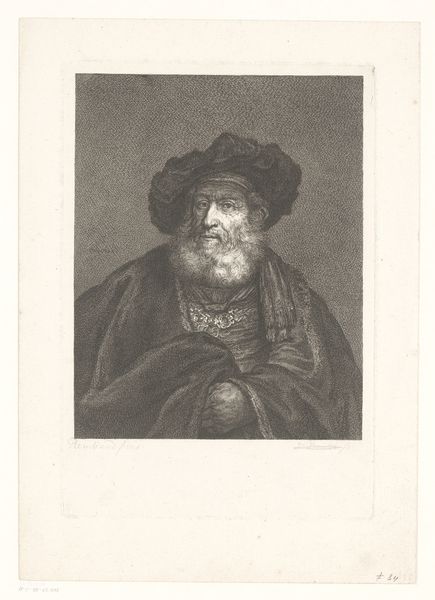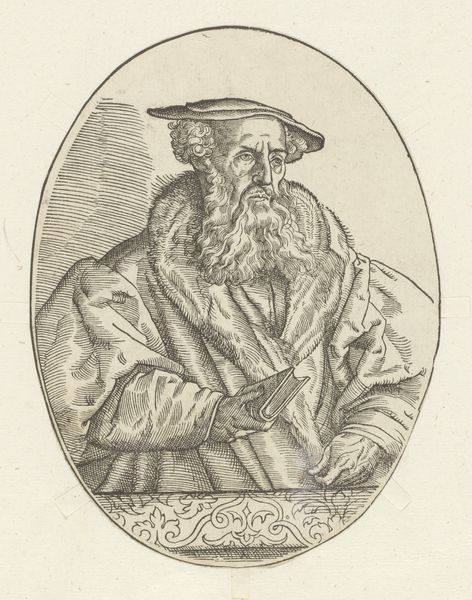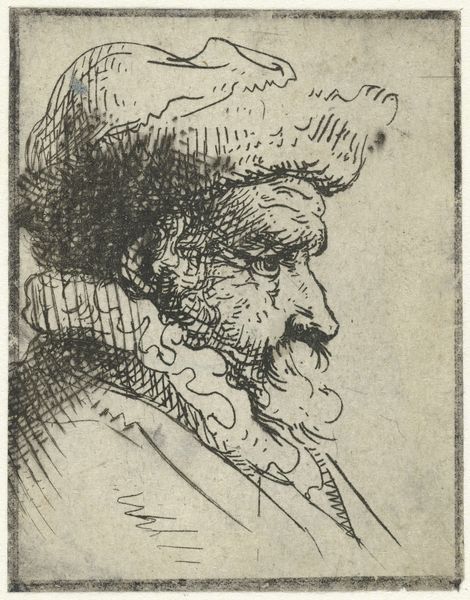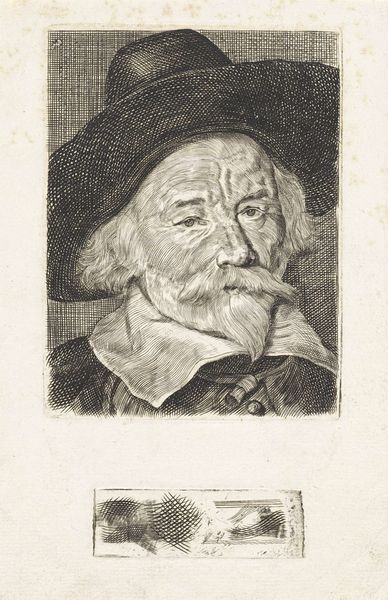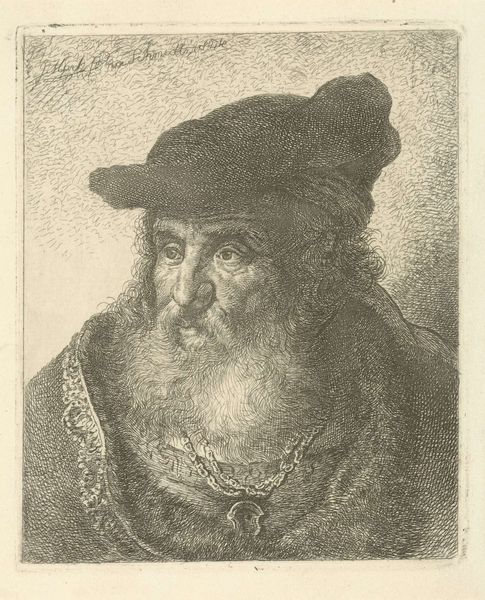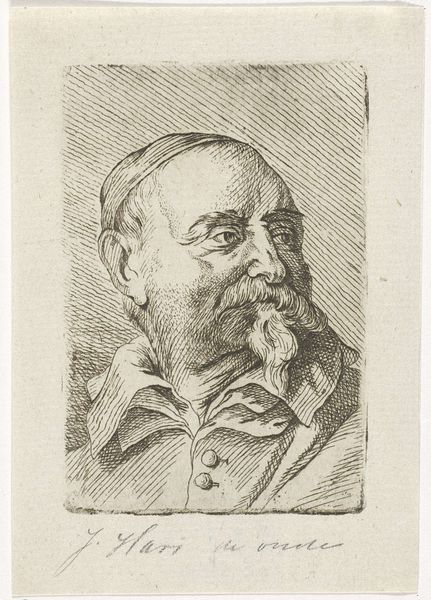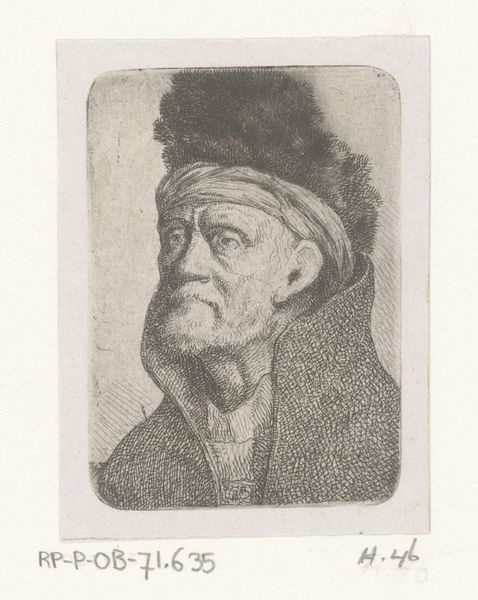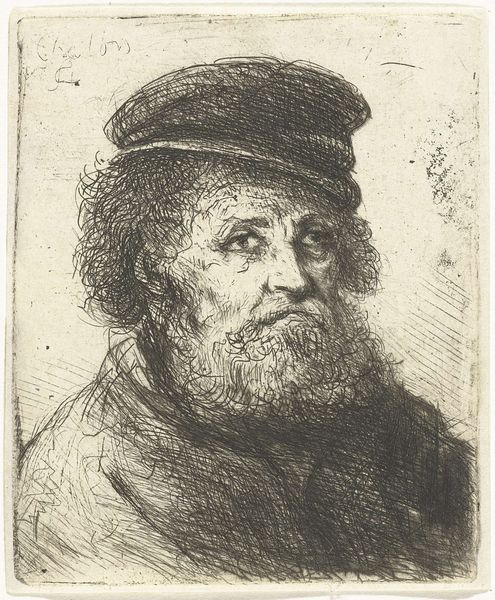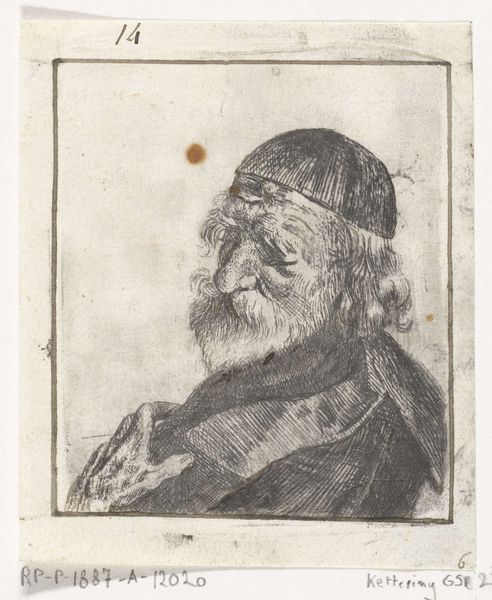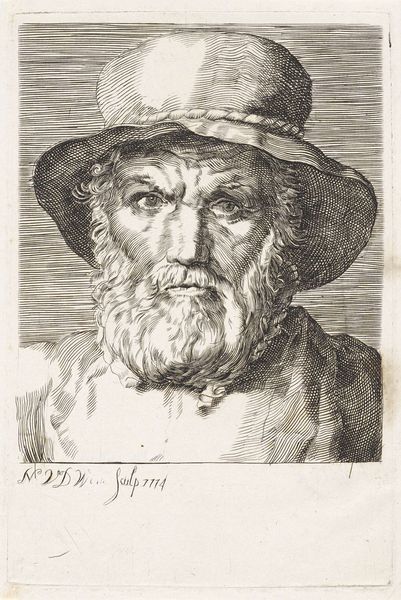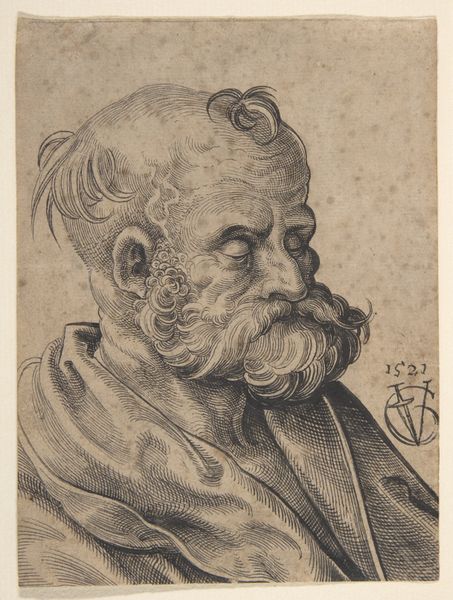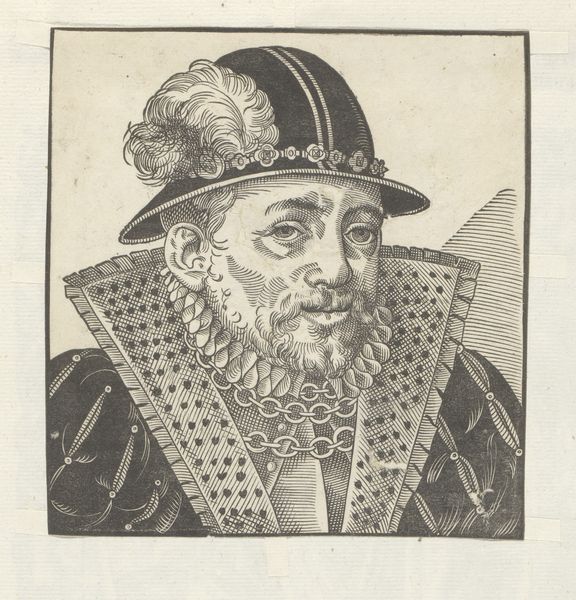
carving, print, engraving
#
portrait
#
carving
# print
#
caricature
#
portrait reference
#
portrait drawing
#
northern-renaissance
#
engraving
Dimensions: height 116 mm, width 101 mm
Copyright: Rijks Museum: Open Domain
Curator: Christoffel van Sichem I created this engraving, "Portret van Dirck Volckertsz. Coornhert," around 1590. You can find it here at the Rijksmuseum. What strikes you about it initially? Editor: The overwhelming density of the lines! It almost vibrates on the page, particularly around the face and beard. It's an incredibly active surface for such a still subject. Curator: The subject, Dirck Volckertsz. Coornhert, was a Dutch writer, philosopher, translator, and politician. These prints often served not only as portraits but also as ways to disseminate humanist ideas. The lines contribute more than texture; they create depth and almost a tangible sense of his intellectual presence. Editor: Absolutely. I notice the artist contrasts the linear intensity of his face with the more softly modeled hat, and also the garment he is wearing. Perhaps it's a subtle comment on his profession versus his inner self? Curator: That's perceptive. Clothing of this era indicated rank and wealth, so we're seeing something that gives us a glimpse of his outward standing but also perhaps downplaying any association to privilege to further spread and suggest the egalitarian spirit that drives intellectualism and humanist thought. Look at the details in his eyes, the clear gaze and furrowed brow—these things telegraph an intellectual nature more directly than any adornment could. Editor: Yes, it's like the face itself becomes the signifier, more than any symbolic object. The face carries the weight of the identity, doesn't it? It's so intensely studied by the artist. The rest is almost just a framework for that powerful face. Curator: These portraits circulated among intellectuals of the time, almost like calling cards or profile pictures of their day. They were visual markers in networks of learning and exchange. They serve not just as images, but almost active agents in furthering intellectual society at the time. Editor: Interesting—so the object is essentially an invitation to philosophical discourse. It’s like an early modern meme, endlessly reproduced and disseminated! Thanks, that’s given me a richer sense of context to reflect on. Curator: And for me, a starker sense of how enduring an expertly rendered face can be, beyond symbols and trappings. Thank you.
Comments
No comments
Be the first to comment and join the conversation on the ultimate creative platform.
